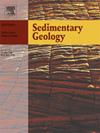Paleosols as paleoclimate proxies to reconstruct mid-Cretaceous paleoclimate conditions in Central Patagonia, Argentina
IF 2.9
2区 地球科学
Q1 GEOLOGY
引用次数: 0
Abstract
The paleosols preserved in the Bajo Barreal Formation in central Patagonia (Argentina) provide valuable insights into mid-Cretaceous paleoclimatic conditions at mid-paleolatitudes in the Southern Hemisphere. This study integrates macro-, micro-, and nanomorphological analyses, clay mineralogy, and geochemical data to characterize and classify the Bajo Barreal's paleosols and reconstruct their paleoclimate conditions. The Cerro Ballena anticline's exposure begins with isolated, small-scale channel belts of low connectivity within siliciclastic mudstones (Section A). Upwards, it transitions into sheet-like, interconnected channel-belt complexes interbedded with thinner volcaniclastic floodplain deposits (Section B). We identified four pedotypes in stratigraphic order of appearance: Cerro Guacho (vertic Alfisols-like paleosols), Cañadón Vasco (Vertisols-like paleosols), San Bernardo (Ultisols-like paleosols), and Río Deseado (hydromorphic Inceptisols-like paleosols). Section A contains smectite-rich vertic Alfisols-like paleosols and Vertisols-like paleosols formed under moderate weathering, dominated by argilluviation, vertization, hydromorphism, and calcification. Section B, in contrast, contains kaolinite-rich Ultisols-like paleosols and hydromorphic Inceptisols-like paleosols formed under intense weathering conditions, dominated by lixiviation (ferruginization) accompanied by argilluviation and hydromorphism. This progression reflects a transition from temperate and subhumid conditions with seasonal rainfall (Section A) to warmer (temperate) and humid conditions with perennial rainfall (Section B). This vertical progression parallels mid-Cretaceous global climate dynamics and potentially reflects changes near the Cenomanian–Turonian boundary and OAE 2, offering valuable contributions to refine Southern Hemisphere paleoclimate reconstructions.
古土壤作为古气候指标重建阿根廷中部巴塔哥尼亚中白垩世古气候条件
巴塔哥尼亚中部Bajo Barreal组保存的古土壤为了解南半球中古纬度的中白垩世古气候条件提供了有价值的见解。本研究综合了宏观、微观和纳米形态分析、粘土矿物学和地球化学数据,对巴霍巴雷亚盆地的古土壤进行了表征和分类,并重建了古气候条件。Cerro Ballena背斜的出露始于硅质泥岩内孤立的、低连通性的小规模河道带(A段),向上过渡为片状的、相互连接的河道带复体,与较薄的火山碎屑冲积平原沉积物互层(B段)。Cerro Guacho(垂直alfsols -like古土壤),Cañadón Vasco(垂直alfsols -like古土壤),San Bernardo(类似Ultisols-like古土壤)和Río Deseado(水形态的类似Inceptisols-like古土壤)。A段含富蒙脱石的垂直Alfisols-like古土壤和中等风化作用下形成的垂直Alfisols-like古土壤,以泥化作用、垂直作用、水形态作用和钙化作用为主。相比之下,B段含有高岭石型的Ultisols-like古土壤和水成型的ineptisols -like古土壤,形成于强烈的风化条件下,以浸出作用(铁化作用)为主,并伴有泥化作用和水成作用。这一过程反映了从温带和半湿润的季节性降雨条件(a段)到温暖(温带)和湿润的多年性降雨条件(B段)的转变。这一垂直过程与白垩纪中期全球气候动力学相似,可能反映了Cenomanian-Turonian边界和OAE 2附近的变化,为完善南半球古气候重建提供了有价值的贡献。
本文章由计算机程序翻译,如有差异,请以英文原文为准。
求助全文
约1分钟内获得全文
求助全文
来源期刊

Sedimentary Geology
地学-地质学
CiteScore
5.10
自引率
7.10%
发文量
133
审稿时长
32 days
期刊介绍:
Sedimentary Geology is a journal that rapidly publishes high quality, original research and review papers that cover all aspects of sediments and sedimentary rocks at all spatial and temporal scales. Submitted papers must make a significant contribution to the field of study and must place the research in a broad context, so that it is of interest to the diverse, international readership of the journal. Papers that are largely descriptive in nature, of limited scope or local geographical significance, or based on limited data will not be considered for publication.
 求助内容:
求助内容: 应助结果提醒方式:
应助结果提醒方式:


